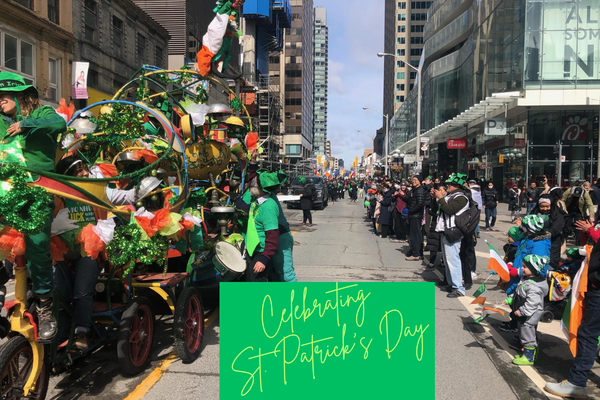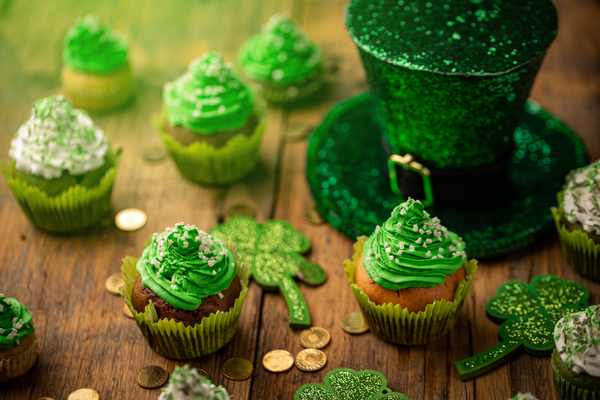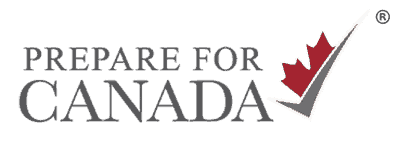
What is Saint Patrick’s Day?
Saint Patrick’s Day is an annual celebration that takes place every year on March 17. Today, the holiday is known for its parties, excessive use of green, and celebrating anything and everything Irish, including St. Patrick’s Day food. However, Saint Patrick’s Day wasn’t always the holiday we know and love today. It started in medieval Ireland as a religious ceremony.
The holiday was created around the 10th Century AD to commemorate St. Patrick and the arrival of Christianity into Ireland. Saint Patrick, whose real name was Maewyn Succat, was born during the 4th century and preached into the 5th century.
Advertisement:
Who Was Saint Patrick?
Today, we see Saint Patrick as the Patron Saint of Ireland. But how did he achieve that status? St. Patrick was the son of a minor local official in Roman Britain. As a child, he was and wasn’t much of a believer. However, after being captured by the Irish and later escaping them, St. Patrick became much more religious and devoted to Christianity.
Advertisement:
Legend has it that Saint Patrick received a dream that he claimed was a divine message from God. The dream commanded Saint Patrick to return to Ireland to help the Irish people find Christianity. At this point, the Irish were mostly Pagan and hadn’t accepted Christianity. So when St. Patrick landed on the shores of Ireland, he was one of the first people to bring Christianity to Ireland.
At first, Saint Patrick’s preachings were unwelcome and mostly ignored. But slowly, Saint Patrick started getting followers and openly preaching to the Irish public. The Irish started accepting Christianity and Christianity soon became the dominant religion in Ireland.
The Legacy of Saint Patrick
Just a couple of centuries after Saint Patrick passed away, he had already become a legend. He was acknowledged for being the person who brought Christianity to Ireland. Saint Patrick became known as the figure who chased away all the snakes from Ireland. He is also credited for helping the needy in Ireland by feeding the hungry.
Why Do We Celebrate Saint Patrick’s Day?
St. Patrick’s Day celebrations find their roots in Ireland. As mentioned earlier, these celebrations were primarily religious and commemorated the arrival of Christianity into Ireland. As Irish immigrants started arriving in Canada, they brought their culture and traditions along with them. One of these traditions was, of course, the Saint Patrick’s Day Feast on March 17.
Because Canada is a multicultural country with many different religions, St. Patrick’s Day is less of a religious festival and more of a symbol of Irish Identity. Today, just like Christmas, people from different religions and backgrounds from all across Canada celebrate St. Patrick’s Day.
Advertisement:

Is Saint Patrick’s Day a Statutory Holiday in Canada?
Even though Saint Patrick’s Day is a popular holiday, it is only an official holiday in the province of Newfoundland and Labrador. St. John’s Newfoundland is the closest North American port to Ireland. Many areas of the province were originally settled by Irish immigrants. Many residents of Newfoundland are direct descendants of Irish immigrants.
While St. Patrick’s Day is only recognized as a holiday in Newfoundland, Canadians across the country celebrate the holiday. Often, Saint Patrick’s Day celebrations span multiple days, or take place on the weekend. This year, the holiday falls on a Friday, right at the beginning of a weekend. It is safe to say that the celebrations will be sure to last the whole weekend.
Common Symbols Associated with Saint Patrick’s Day
Like many other holidays, St. Patrick’s Day has many symbols that come with it. These symbols become a common sight leading up to St. Patrick’s Day and are everywhere on the 17th of March. One thing all these symbols have in common is that they are all green. Seriously, everything goes green on St. Patrick’s Day.
The Shamrock
The Shamrock is one of the most common symbols you will see during Saint Patrick’s Day. A shamrock is a three-leaf clover that is a symbol of both St. Patrick’s Day and Ireland as a whole. Irish legend has it that St. Patrick used a shamrock to explain the concept of the Holy Trinity, which is a fundamental Christian concept.
The whole world is Irish on the Seventeenth o’March
Thomas Augustine Daly, Irish Poet
The Colour Green
The shamrock and green are both common symbols that are part of St. Patrick’s Day. These things also symbolize the nation of Ireland, as the color green symbolizes Irish nationalism. As Irish Poet Thomas Augustine Daly once said, “The whole world is Irish on the Seventeenth o’ March!”
Leprechauns!
An article on Saint Patrick’s Day wouldn’t be complete without mentioning Leprechauns. Mischievous, little Leprechauns have become the unofficial mascot for the holiday. St. Patrick’s Day parades, which we will talk about later, are full of people dressed up as Leprechauns. These mythical creatures from Irish folklore have now become entwined with St. Patrick’s Day.
Saint Patrick’s Day Traditions in Canada
Today’s Saint Patrick’s Day is very different from the religious festival that first started in Ireland. Since the first Saint Patrick’s Day Parade in Montreal in 1824, Saint Patrick’s Day has become a celebration of Irish identity.
One of the most common Saint Patrick’s Day traditions in Canada and across the world is the Saint Patrick’s Day Parades. The parades take place in almost every big city in Canada. Unsurprisingly, the biggest St. Patrick’s Day Parade takes place in the Canadian city where it first started—Montreal. A fact that is not commonly known about Montreal and the province of Quebec is that a lot of native French speakers living there have Irish roots. This is evident in the grand celebrations that take place in Montreal on the 17th of March.
Saint Patrick’s Day Food

Almost everything that Saint Patrick’s Day encompasses has something to do with Irish culture. When it comes to St. Patrick’s Day foods eaten on the holiday, the most popular choice is surprise, surprise, Irish cuisine. A popular St. Patrick’s Day food is corned beef and cabbage. Colcannon is another Irish favourite. It consists of mashed potatoes and shredded cabbage often served alongside meat.
Desserts with green icing are common for St. Patrick’s Day as well. You’ll see cupcakes with green icing or doughnuts with green sprinkles become the closer it gets to March 17.
Saint Patrick’s Day Parades in Montreal
Let’s talk a little about what the Saint Patrick’s Day parades are like. Specifically, let’s take a look at the annual parades that take place in Montreal, Quebec. During the three-hour parade, thousands of people gather on the streets to watch the spectacle. During the event, live performers, marching bands, and people dressed up in costumes join the parade. And in the midst of it all, is the mascot for the holiday—a leprechaun! Of course, it’s not a real leprechaun. It is just someone in a leprechaun costume.
Make Sure to Stay Respectful
We talked about common traditions such as eating Irish food, attending live Irish music concerts, and wearing green. However, it is also important to stay respectful of the Irish people and their culture. Some people go overboard on St. Patrick’s Day and promote hurtful stereotypes of the Irish culture. An example is drinking loads of beer and calling it a part of the Irish culture. This stereotype about Irish people is not true, and the only thing it does is hurt the Irish identity. It is good to have fun as long as we remain respectful.
Saint Patrick’s Day is an opportunity to have fun and celebrate Irish culture at the same time. Just remember to stay mindful of how our actions might impact the people around us.
For more information, tools, and free webinars about living in Canada visit our Settling in Canada resource page. We’ll help you to settle in Canada successfully!

My name is Zain Usmani and I am a freelance content writer who currently resides in Mississauga, Ontario. I immigrated from Pakistan to Canada 5 years ago and have lived in many cities ever since. I have lived in Calgary AB, Edmonton AB, Regina SK, London ON, and Mississauga ON, while visiting over 40 Canadian cities and towns. I have a great passion for writing and I love helping people through it.

